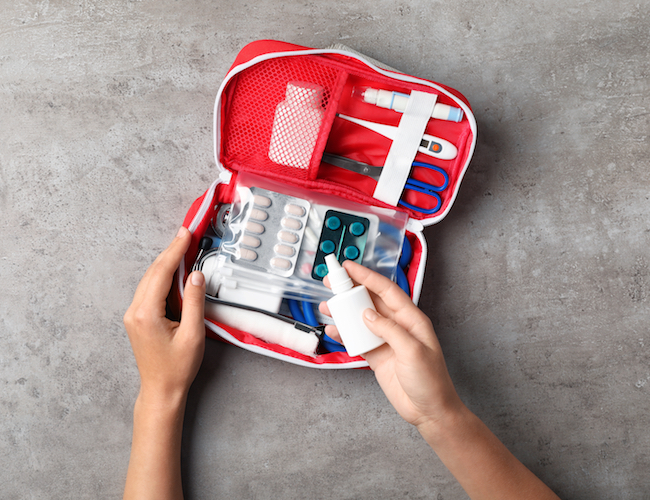Basic first aid skills every parent should know
From scrapes and bruises to a potentially serious bump on the head, toddlers can be incredibly accident prone – are you prepared in case of an emergency?
Read on for some of the basic first-aid skills that you’ll need to familiarise yourself with.
A bump on the head
“If your child has bumped their head, make sure to look out for signs of a concussion,” advises Sister Mariaan Fourie, a nursing practitioner at Clicks in Somerset Mall.
“These include sleepiness, confusion, a headache, vomiting, and even passing out.” If your toddler displays any of these symptoms, take them to the emergency room immediately.
If you think that your child has hurt their neck, make sure that you keep them as still as possible and call an ambulance.
In the meantime, you can wrap a bag of frozen veggies in a towel or use an ice pack and apply this to the area to help reduce swelling.
Encourage your little once to rest, and keep an eye on them for any changes in his behaviour.
Nosebleeds
Toddlers tend to be wriggly, but try get your little one to sit still with their head tilted forward slightly.
Pinch their nose just below the nasal bone using some tissues or a face cloth – this should help stop the bleeding after roughly 10 minutes.
If bleeding doesn’t stop after half an hour – or if you suspect that your child’s nose is broken – head to the emergency room immediately.
A broken bone
If your toddler has fallen and seems to be in a lot of pain, has swelling in the injured area, or starts to throw up, they may have a broken bone.
Make sure that you keep the limb as still as possible, and go to the emergency room. “If you can see the bone sticking out or if the limb is crooked, the bone is broken and you need to take your child to the emergency room,” says Sr Fourie.
Choking
“If your child is choking, continue talking to them,” advises Sr Fourie. “If they can still talk and respond, it means that their airway is clear and they should be able to cough up whatever they're choking on.”
Don’t put your fingers in your child’s throat, as this may just push the item further down. If your child can’t talk and is struggling to breathe, call an ambulance and put them on speaker phone while you wait for them to arrive, then pick your child up and turn them facedown on your lap.
Use the heel of your hand to give your child a few firm knocks on their back, between their shoulder blades.
Make sure that you have a fully-stocked basic first-aid kit at home and in your car. This should contain a pain- and fever-relieving medication, a selection of bandages, a thermometer, Calamine lotion, a Saline nose spray and a bulb suction device, as well as a burn shield and anti-bacterial cream.
IMAGE CREDIT: shutterstock.com



